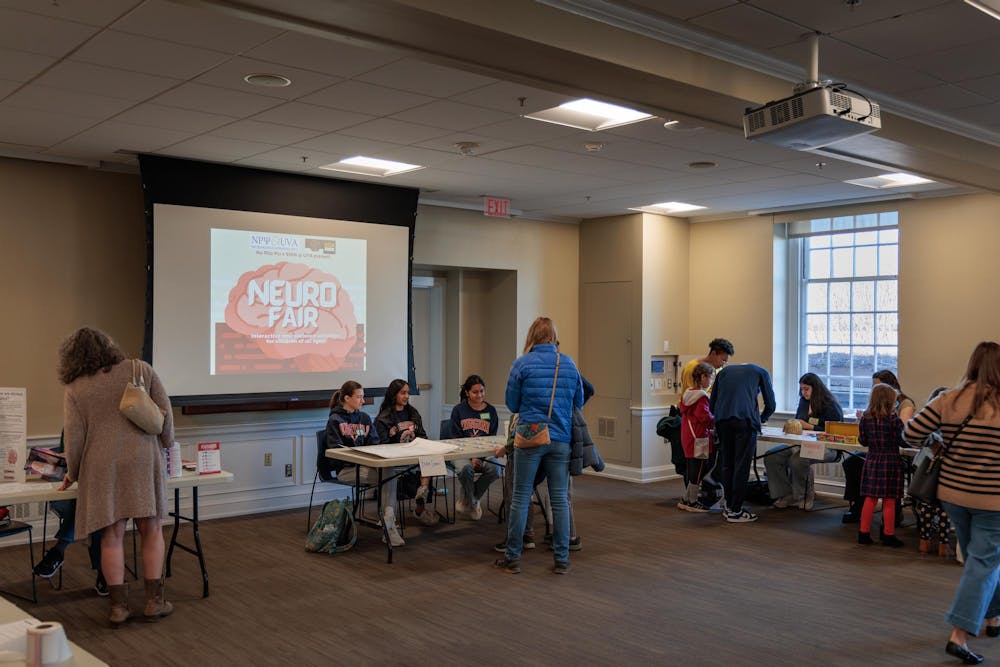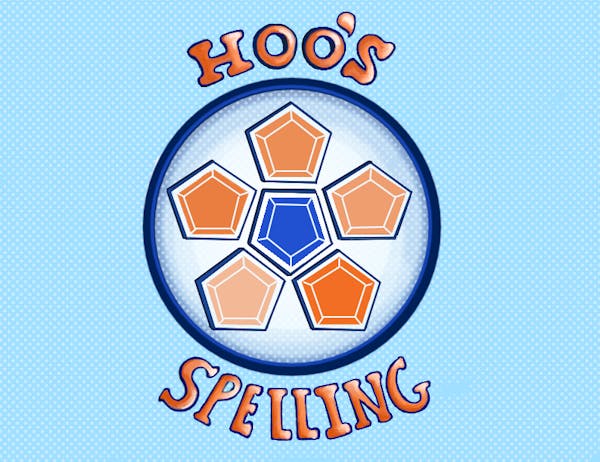Two student organizations, the Neuroscience Honors Society and Student Interest Group in Neurology, hosted a Neuroscience Outreach Fair in Newcomb Hall Sunday. This event was aimed at fostering early interest in neuroscience and STEM fields. The organizations invited elementary through high school students from across Albemarle and Fluvanna Counties to participate in a variety of neurology-related activities.
Shrinidhi Kittur, NHS president of external affairs and fourth-year College student, said she hoped to share neuroscience-related topics with younger students.
“Our goal is to show off the really wide range of neuroscience topics and how that applies to everyday life,” Kittur said. “We also want to make it fun and accessible to a lot of people.”
NHS is an undergraduate and graduate student organization that connects members with pre-professional opportunities and promotes engagement in neuroscience for the Charlottesville community, while SIGN is a graduate student organization within the School of Medicine that aims to encourage interest in neurology among medical students. These two organizations partnered to develop the range of activities offered at the fair.
According to Kittur, 120 community members RSVP’d, and the event reached the maximum capacity of the space Sunday.
NHS and SIGN members were hosting the booths offering creative demonstrations of neuroscience concepts, including a showcase of different brain models, such as real human brains borrowed from Brain Awareness — a graduate organization at the School of Medicine. Students could carefully touch the sealed brains and NHS volunteers were present to explain what each part of the brain was.
One booth offered engagement in the form of brain games, featuring a Stroop Effect test — in which students try to say the color of the word instead of the word itself — and a memory card game in which participants try to match sets of cards.
Gianna Latorre, NHS vice president of internal affairs and fourth-year College student, expressed a commitment to spreading awareness and providing scientific knowledge that may not be readily available to children.
“I think it is our job as people who are in STEM and in neuroscience … to teach people and teach younger kids and expose them to these things,” Latore said.
An art station offered crafts, such as creating a thinking cap that illustrates different parts of the brain and making neurons with pipe cleaners. Materials like paper, markers and playdough were available for students to draw and mold their own brain models and neurons. Some booths also provided informational presentations and case studies on neuroscience topics and medical issues, including warning signs of neurological conditions like strokes.
Eva Campbell, NHS president of internal affairs and fourth-year College student, noted the wide age range of students attending the event. She said that art was another way to make the event accessible to different age ranges.
“We wanted to cater to a wide age range of children, so we thought something really accessible would be neuroscience art,” Campbell said.
The Neuroscience Honor Society organizes several other outreach events throughout the year, including an upcoming field trip with Peabody Middle School to the University’s biology labs.
Kittur spoke about her hope to encourage students to pursue scientific careers, saying that the students in attendance could be the future of the neuroscience field.
“I think that educating and getting kids, the future generation of neuroscientists, excited about neuroscience topics is really important, and that's what we're hoping to do with this today,” Kittur said.







